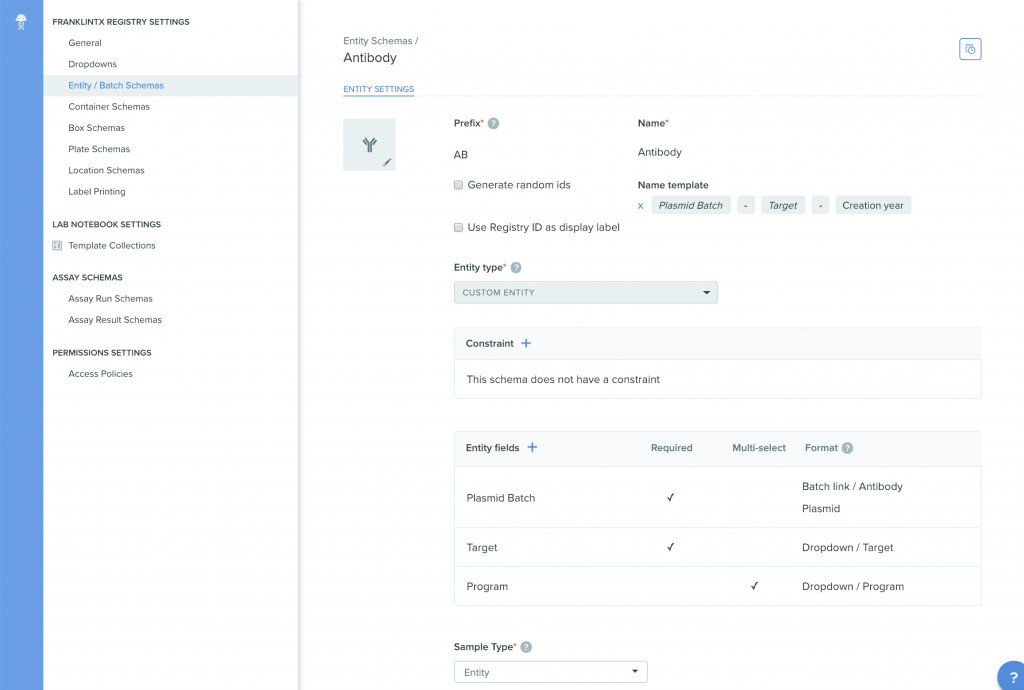Benchling Product: 2018 Year in Review
The field of life sciences is rapidly evolving, powered by breakthrough research and the fast-paced growth of biotech organizations. At Benchling, product innovation is core to helping our customers thrive in this challenging and dynamic environment. We rolled out many advanced product capabilities over 2018 resulting in significant expansion in our footprint inside life sciences R&D teams. Below are a few highlights:
Keeping up with complexity of biologics R&D
Biologics R&D continues to become more complex, driven by innovative therapeutics and changing scientific workflows. Benchling added several features which help scientists cope with this complexity.
Smarter bulk assembly of DNA sequences:Design hundreds of constructs at once from a library of backbones and inserts using restriction enzymes or homologous regions.

New “task” feature within requests to support complex test panels: Define the exact set of tests to run for each sample in a test panel and track the status of tests on a test-by-test and sample-by-sample basis.

Result field validation and LOQ to support complex assays:Improve the quality of data with result field validation based on pre-defined experimental criteria. Additionally, model data above or below the pre-set thresholds with the LOQ function.

Making Benchling even more enterprise friendly
Large life sciences R&D organizations have unique requirements for how scientific data are generated, recorded, and shared across the various teams. Benchling further added to features that improve the quality of data being recorded and enables users to request access to data as necessary.
Registry validation for legacy data: Easily identify legacy registry data that may not comply with current rules, and create custom exemptions.

Requesting access to projects:Request access to data and projects in a simple streamlined manner.

Added configurability in the registry:More precisely map relationships between different biological entities with four additional schema configuration settings.

Improving usability through deeper integrations in our apps
Benchling offers a truly seamless experience that allows scientists to focus on their science. Building on this unique capability, we released more features that enable even greater unification of the user experience across all Benchling applications.
Register entities and create samples from the lab notebook: Bulk register entities and samples directly from within the lab notebook with added functionality such as customizable fields, formulas and autofill.
Register entities from a container/plate: Register new samples directly from any storage container/plate without having to navigate back-and-forth between the “entities” and “storage” areas in Benchling.


Place a request from a plate: Request assays from plates or boxes of samples in bulk.

Adding even more developer tools
Benchling offers developer tools that provide an unprecedented level of point-and-click configuration and extensibility for custom functionality. In 2018, we released even more features that provide a richer toolkit for more advanced customizations and extensions to meet the needs of our customers.
New assay runs:Upload results via the instrument integration API to assay runs in a notebook.

Over 20 new API endpoints and 5 new data types in the warehouse: Build custom software that integrates with Benchling for automated data capture and analysis.

Learn More
If you haven’t tried Benchling, we encourage you to request a demo or sign up for a free account. Our solution will increase your research productivity and improve R&D decisions made across the organization.
If you use Benchling: what did you think of this year’s features? We’d be delighted to receive your feedback via the in-app chat.